- Product
- Solution for
For Your Industry
- Plans & Pricing
- Company
- Resources
For Your Industry
The online market is brimming with retailers selling the same items. To stand out, you need a smart strategy. Price monitoring and optimization are crucial first steps.
Unlocking Competitor Pricing Insights
European Article Numbers (EANs) are your secret weapon for accurate price comparisons. Use them on platforms like Amazon, Google Shopping, eBay, and Bol to see how competitors price your shared products. This intel empowers you to set or update your prices strategically.
For an automated approach, consider specialized price monitoring software. These tools leverage EANs to track competitor prices, send price change alerts, analyze trends, and generate reports. Regularly updating this data ensures your pricing strategy stays sharp. Price Monitoring software can even provide continuous, real-time market monitoring.
This revised version condenses the introduction and eliminates unnecessary details about retailers and wholesalers. It focuses on the importance of price monitoring using EANs and software, keeping the word count similar.
In this blog, let’s discuss in detail the steps you can take to stand out when your competition is selling the same products.

Monitoring competitors’ prices and adjusting them helps you gain visibility on online platforms. In these platforms like eBay and Google Shopping, products are ranked price-wise.
Knowing competitors’ prices, helps you adjust the price your products to appear on the first page, boosting clicks and sales. This doesn’t mean you need to be the cheapest.
Pricing 1-2% higher can increase margins without losing customers. This is because it often implies better value and service. Tools like tgndata’s competitor pricing solution make this process easier.
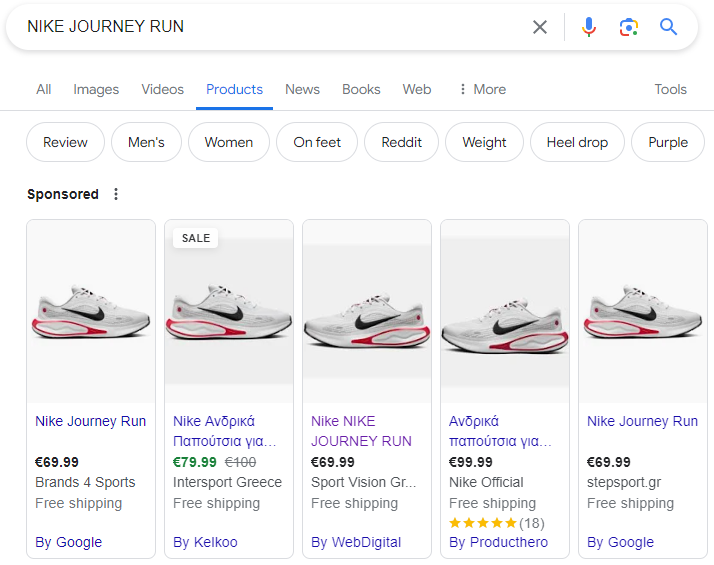
Now, you can couple this with a smart pricing strategy to not only stay competitive but also gain slightly higher profits than the others. Here’s why you need to monitor competitor prices often and how this can help in boosting product revenue.
Why exactly should you monitor competitor prices? The simple answer is visibility. On platforms such as eBay and Google Shopping, products are often sorted and displayed based on price competitiveness. By knowing the price points of your competitors, you can strategically price your products to appear on the first page of search results—a critical factor in driving clicks and ultimately, sales.
Firstly, you would want to rank higher in the product search when customers are looking to buy the item. But, so are the other retailers or brands aiming for. Here, you need to optimise your product description and the pages through clear communication and videos of using the product.
Also, collecting customer reviews becomes crucial as people trust other buyers’ experiences before they confirm their purchase. Likewise, you optimise your presence on the online marketplaces before your audience.
Now you may ask how monitoring competitor prices can help you set the right prices. While securing a spot on the first page of marketplace search results is important, it doesn’t necessarily mean you have to be the cheapest option available. Pricing your products just 1% to 2% higher than the lowest price can significantly increase your margins without upsetting customers.
This slight price increase can be the key to enhancing profitability while remaining attractive to shoppers who perceive slightly higher-priced products as potentially offering better value, more authentic, smooth customer service and reliable delivery experience.
To maintain the right prices with your direct competitors in the market, it is a smart move to employ an advanced AI-driven repricing engine. This technology allows you to automatically adjust your prices based on real-time market data and competitor pricing strategies.
With a repricing tool, you can ensure that your products are always priced optimally for each sales channel and each country you operate in. This not only helps in maintaining competitive prices but also in maximizing your profitability across different market dynamics.
By monitoring and optimizing your prices with these strategies, you can effectively enhance your visibility, attract more customers, and increase revenue, ensuring that your business remains competitive in a bustling online marketplace. You can easily find the right prices for any product using a smart pricing tool like tgndata.
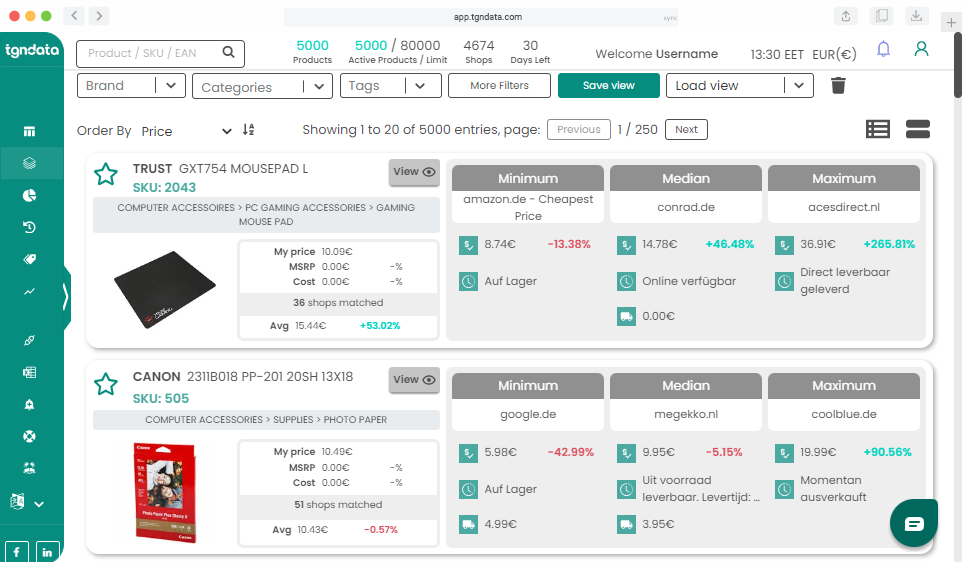
Effectively monitoring competitor prices is key to maintaining a competitive edge in a crowded market. Here’s how you can keep track of competitor pricing strategies, specifically for products that are identical across different vendors:
The use of European Article Numbers (EANs) is fundamental in comparing identical products across different vendors accurately. EANs uniquely identify a product, ensuring that the comparisons you make are for the same item, not similar ones.
Use EAN searches on various tools and platforms that aggregate product data. This allows you to pull up precise information about a product’s pricing across different online retailers and marketplaces.
Invest in specialized price monitoring software that can automate the tracking of prices across various platforms using EANs. Such software can:
The market is dynamic, with prices changing frequently. To ensure your pricing strategy remains relevant, schedule regular reviews of your price monitoring data. Depending on your industry and the volatility of the market, this could be as frequently as daily or as infrequently as monthly. This process becomes even smoother and automatic in price engine software that continuously monitors price changes in the market in real-time.
Use the pricing insights that you gain from monitoring competitor prices to adjust your pricing strategy. If your competitors lower their prices, decide whether to match, undercut, or maintain your prices based on your market position and strategic goals. Similarly, if competitors increase their prices, consider whether there is room to increase yours or if you should exploit the gap to gain market share.
By following these steps, you can ensure that your pricing strategy not only responds effectively to competitor movements but also supports your overall business objectives, maintaining a balance between competitiveness and profitability.
It’s crucial to tap into advanced Artificial Intelligence in pricing rather than old-school spreadsheets that set you ages back. An intelligent strategy executed on time would help your business gain customer satisfaction and a profitable edge in the market.
It’s not always about being the cheapest option. A smart approach is to price your products slightly higher—perhaps 1% to 2% more than the lowest competitor. This strategy can help you earn a better margin while still being competitive enough to attract customers.
Implement a repricing engine to adjust prices dynamically across different sales channels and countries. This technology ensures you always offer the optimal price point based on real-time market conditions and competitor pricing.
To manage product/service prices for an enterprise business, a strong pricing process should be in place. As the market becomes more dynamic, responses from the companies in changing prices should become more prompt to stay at par.
Managing large quantities of products means optimizing the prices of more than a million. Assigning this to even a large pricing team can be inefficient and may reflect errors.
Imagine managing 10,000 products across 30 sales channels in 10 different countries. This results in approximately 3 million daily price adjustments—a monumental task requiring sophisticated tools and strategies.
This is where you would need a smart pricing engine to monitor competitive prices and automate the price changes of millions of products to reflect across various online platforms.
To handle such a vast operation efficiently, automating the repricing and monitoring process is crucial. Automation not only saves time but also reduces the likelihood of errors, ensuring that your pricing strategy remains consistent and effective across all markets.
Effective price monitoring and optimisation are key to staying ahead in a marketplace crowded with competitors selling identical products. By understanding the competitive landscape through tools like EAN searches and leveraging AI-driven repricing technologies, you can ensure that your pricing strategy not only enhances revenue but also attracts more customers to your store. Stay proactive and adaptive in your approach to remain competitive in a global market.
Here’s how you can monitor competitor pricing so you can set the optimal prices for your products:
It means that businesses (often retailers) offer the same items to consumers, typically within the same geographical areas or through the same online platforms. This scenario is prevalent in sectors where products are standardised, like basic consumer goods, electronics with similar specifications, or generic pharmaceuticals. In such competitive markets, businesses often differentiate themselves through pricing, customer service, brand loyalty, and marketing strategies to gain and maintain customer interest.

In a market where other retailers are selling the same product, it becomes a bit challenging to set your store apart. But the major pressure falls on:
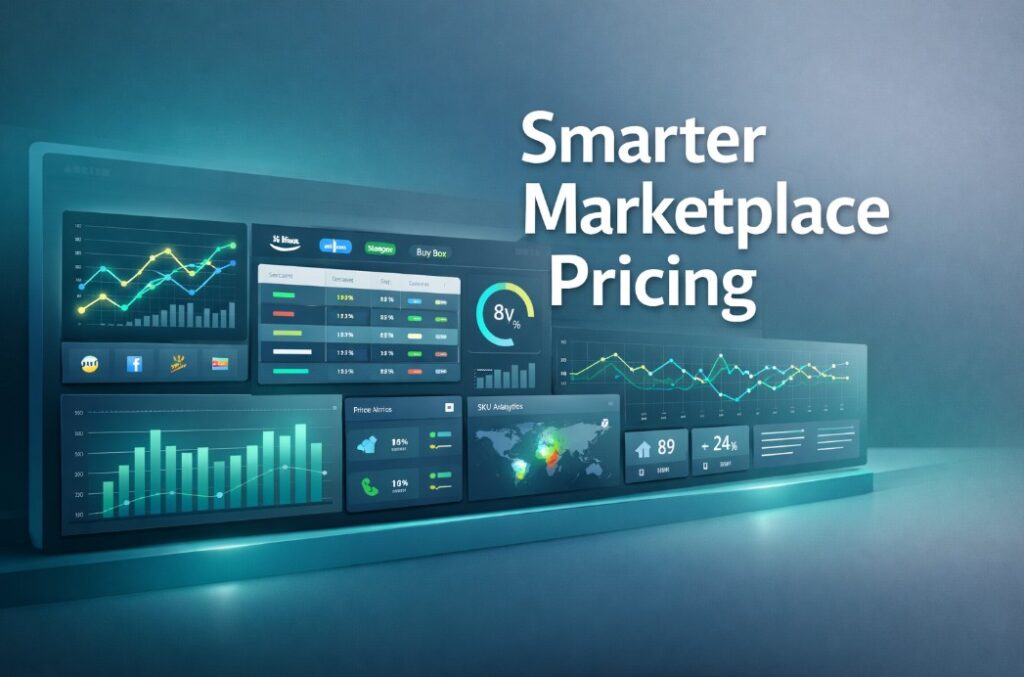
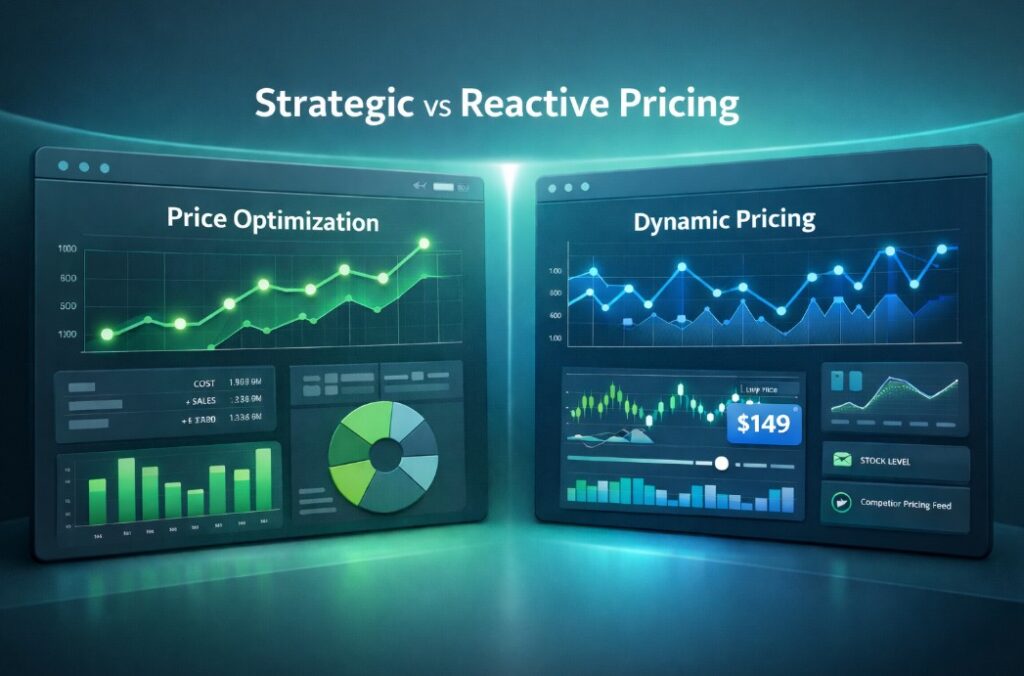
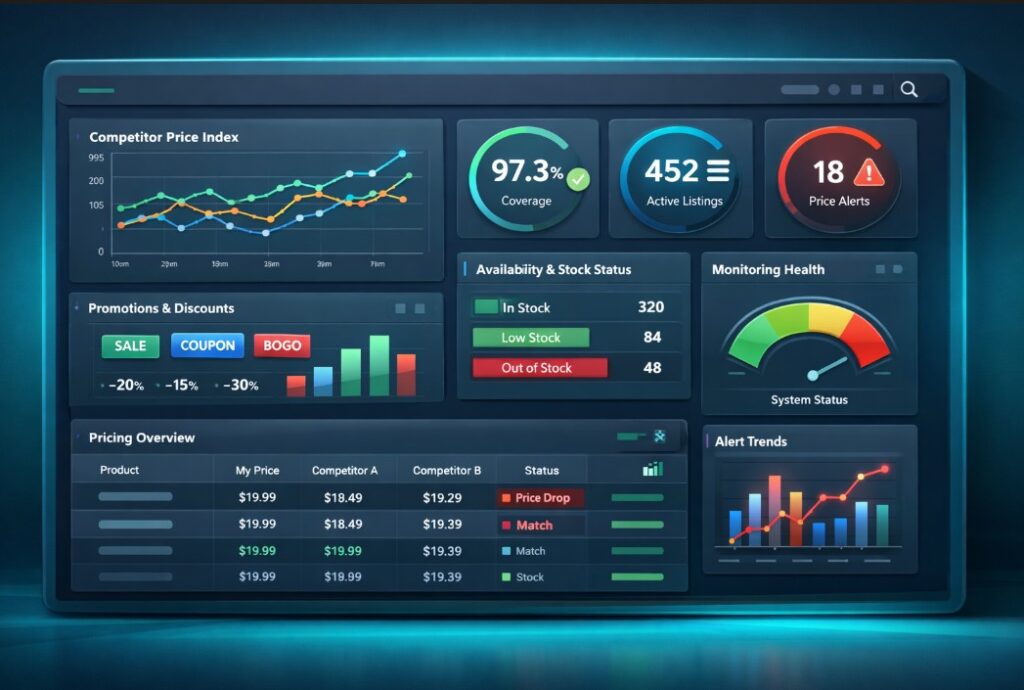
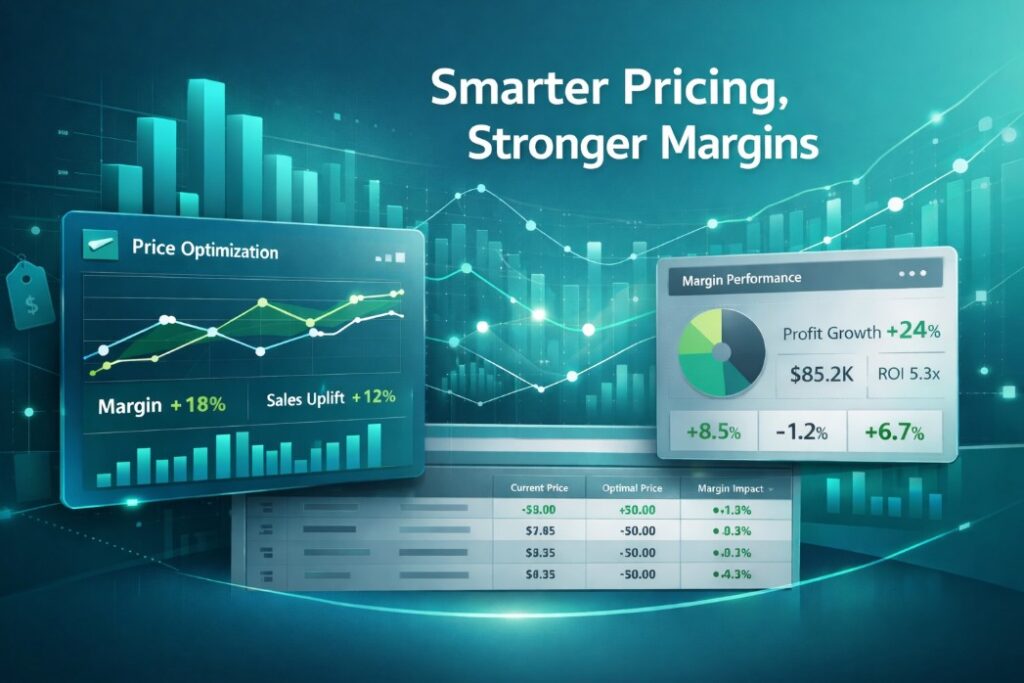
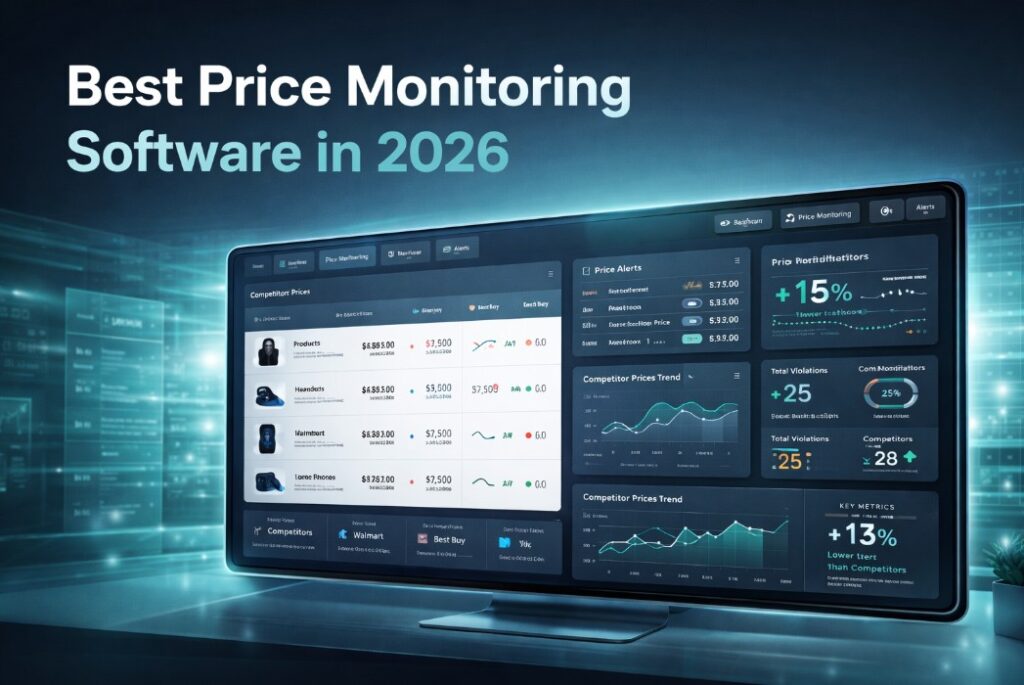
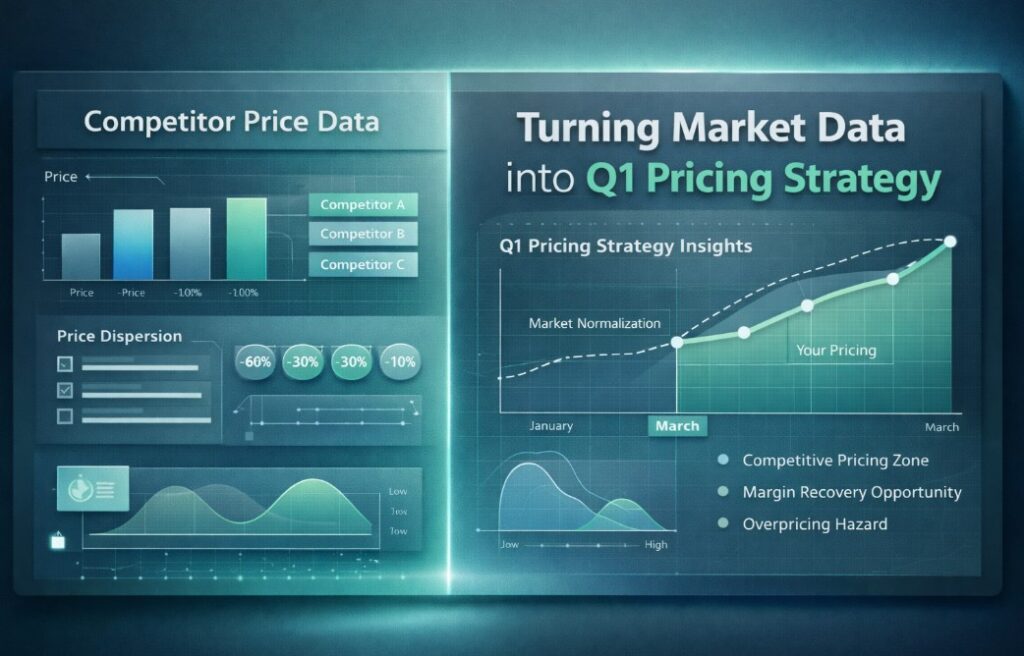







Missing an important marketplace?
Send us your request to add it!